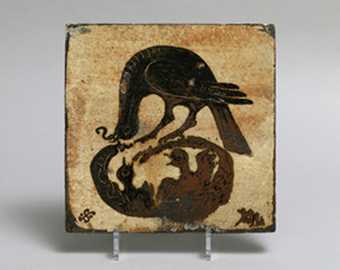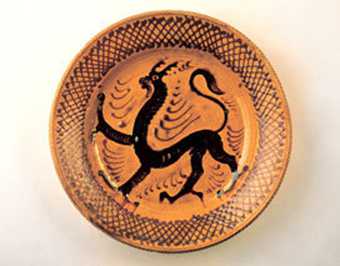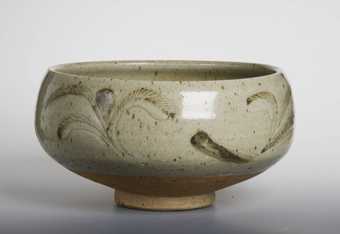
Bernard Leach Tile 1925
It is difficult to imagine the sheer pioneering spirit that led Bernard Leach to move from Japan and set up his pottery with Shoji Hamada in St Ives in 1920, with its famous Japanese climbing kiln. Leach was part of a great flowering of artists and designers in the interwar years that reacted against the academicism and narrow concerns of fine art. They sought more tactile forms of expression – ceramics, stone carving, hand block printing and weaving textiles.
Like many of his contemporaries, Leach often worked with assistants to help realise his ideas, many of whom went on to become leading potters in their own right. This unique group of eighty pots, housed at Tate St Ives since 1993, was brought together by collectors George and Cornelia Wingfield Digby. It reflects on the history and ethos of the Leach Pottery and comprises Leach's own pots, as well as pieces by some of the major potters who worked alongside him. Whilst they all shared an interest in high-fired stoneware and porcelain, they each developed individual styles related to, but subtly different from, each other.


